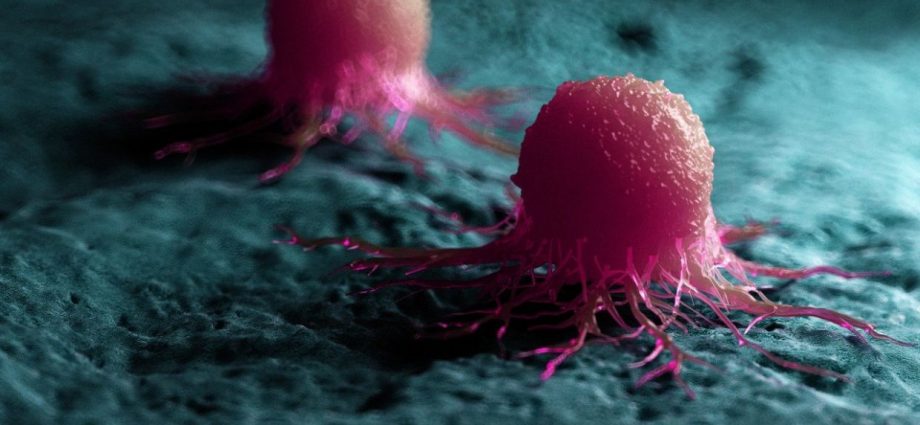
Chinese scientists say they have developed a smart nanomaterial that significantly reduced the number of cancer stem cells in rats in a recent study.
Therapies that can selectively eliminate cancer cells mean less damage to a patient’s healthy cells. But existing treatments cannot specifically target cancer stem cells (CSCs), which can divide and renew – meaning they can duplicate or develop into other types of cancer cells.
And because of the rapid growth and fast mutation rate of active CSCs, conventional therapies cannot eliminate them.
The Chinese scientists said they had created nanoparticles with good biocompatibility in a bid to target and eliminate CSCs, and that the result of their trial on rats showed a significant reduction in CSC numbers.
The findings of the team – from the Chinese Academy of Sciences’ Key Laboratory of RNA Biology and the University of Science and Technology, Beijing – were published in the peer-reviewed journal Biomaterials on Sept 17.
Wang Jian, a co-author of the paper from the academy’s Key Laboratory of RNA Biology, on Tuesday said the treatment worked by blocking the replication process.
“Cell activities highly rely on protein synthesis, and our treatment focuses on the protein factory in cells – the cytosolic ribosomes,” she said.
To do this, the team used targeted release and precise binding of nanoparticles to shut down the activities of the ribosomes to eliminate the CSCs.
In the paper, Wang said this type of treatment that is “dependent on the direct degradation of cytosolic ribosomes in cancer cells” had been “rarely developed”.
The treatment also used photodynamic therapy (PDT) – which has been widely studied and found to have few side effects – to control the release of the medicine molecules.
Those molecules were assembled with harmless photosensitive carriers that form nanoparticles and are transported into cells. The researchers then shone a red laser on the diseased area. After five minutes of this light irradiation, the nanoparticles then released the medicine molecules, which express toxicity in tumour cells, according to the paper.
The cancer cell nucleus and cytosolic ribosomes are full of nucleic acids, and the chemical structure of nucleic acid gives this part of the cell a strong negative charge.
The team said the strong positive charge of the drug molecules meant they were attracted to and enriched in the CSCs.
But that strong charge could also be harmful to healthy cells and tissues. To reduce this potential side effect, the researchers designed the molecule structure with a special amino system.
“To avoid the toxicity from positive charges affecting normal tissues and cells, we used some simple amino compounds as the fundamental building blocks of the nanoparticle,” Wang said.
“The amino compounds can be positively charged only when they are exposed to the acidic micro-environment of tumour cells,” she said. “In normal tissues and cells, the positive charges of amino compounds can be relatively weak, so it secured the safety of the neighbouring cells and tissues.”
Wang said the study had found that this method appeared to “escape the obstruction and interference from the rapid growth and fast mutation rate of CSCs”. – South China Morning Post

